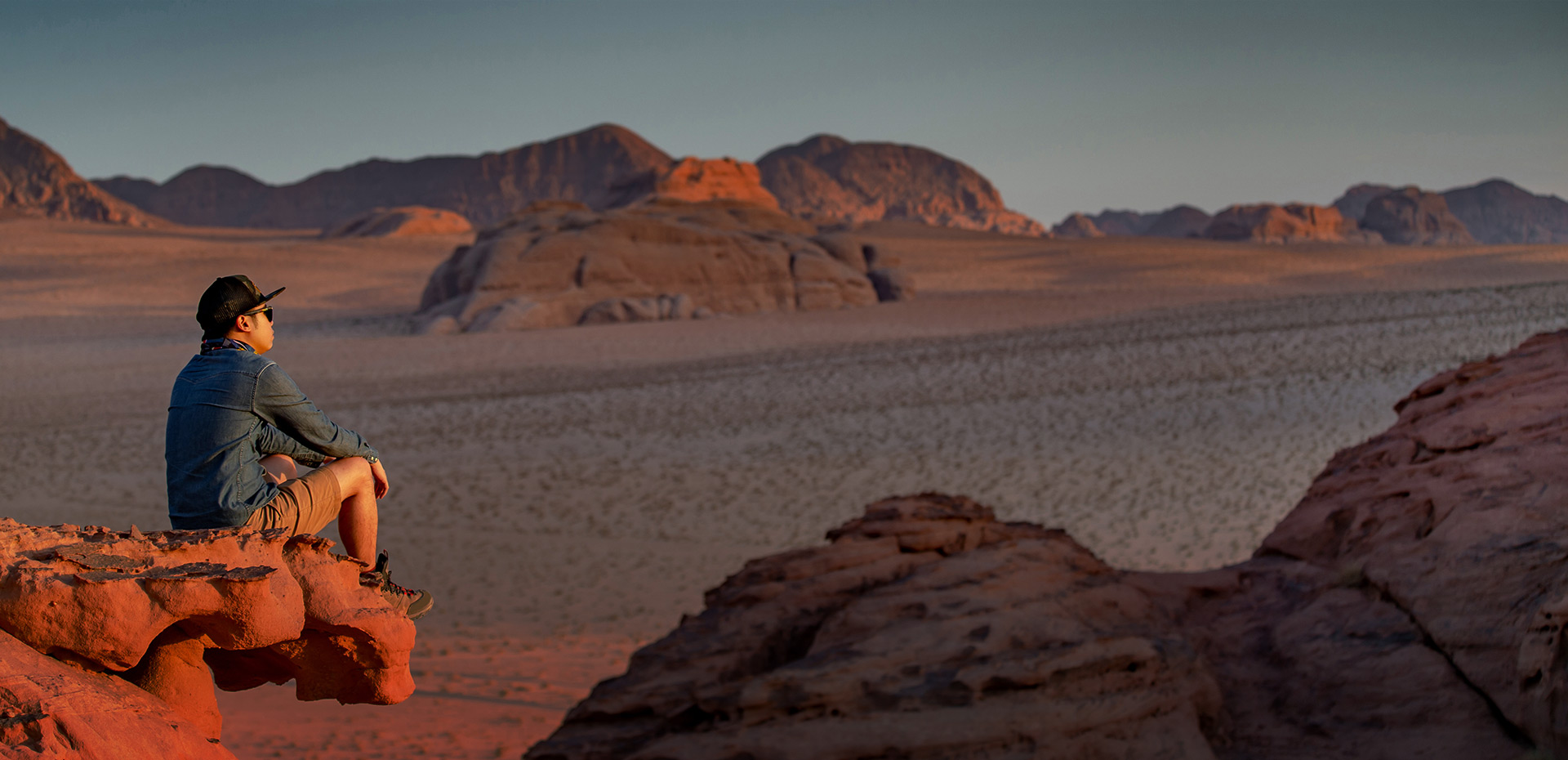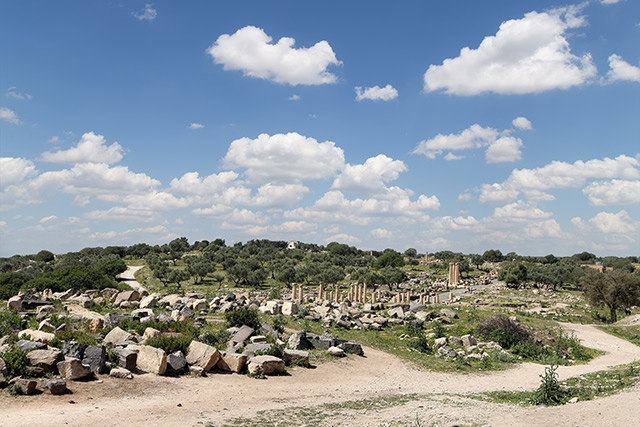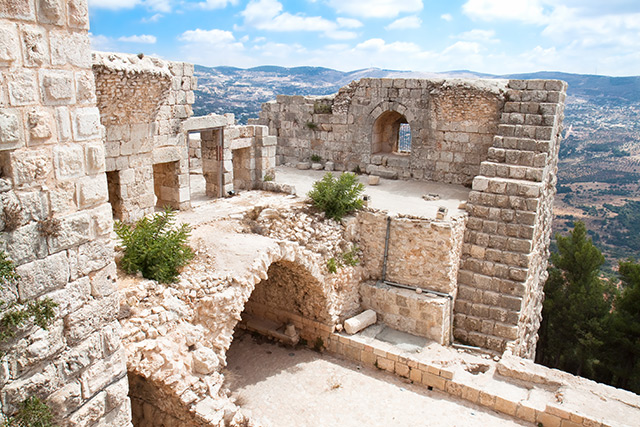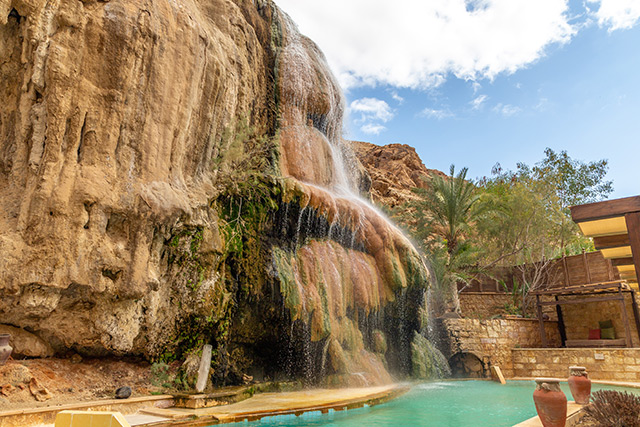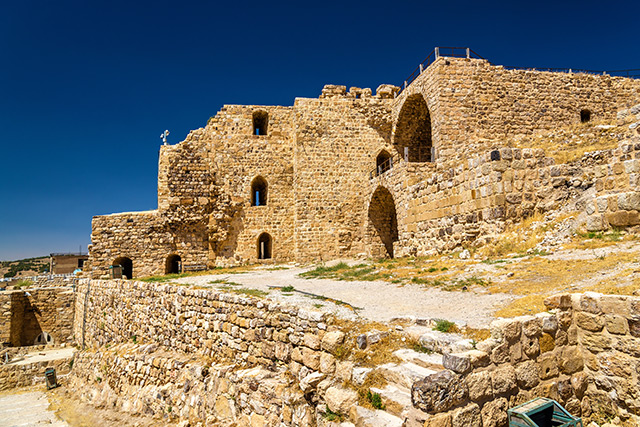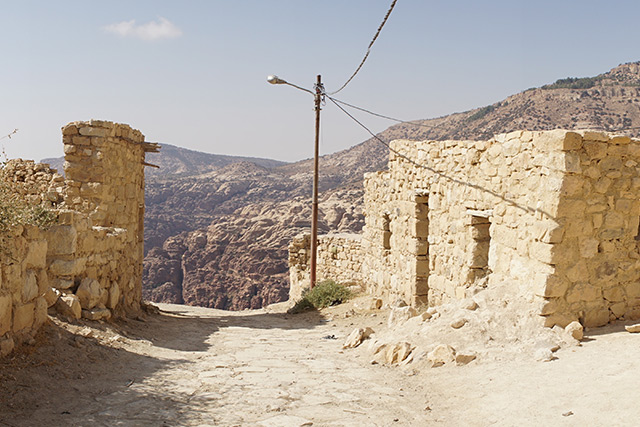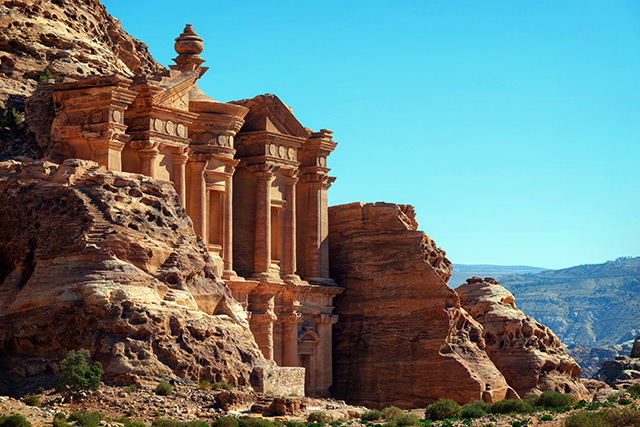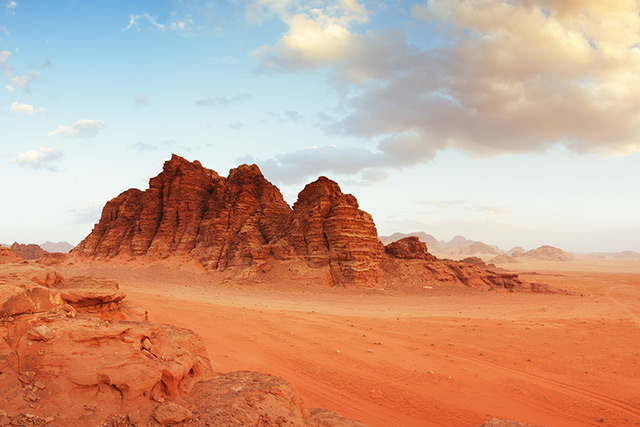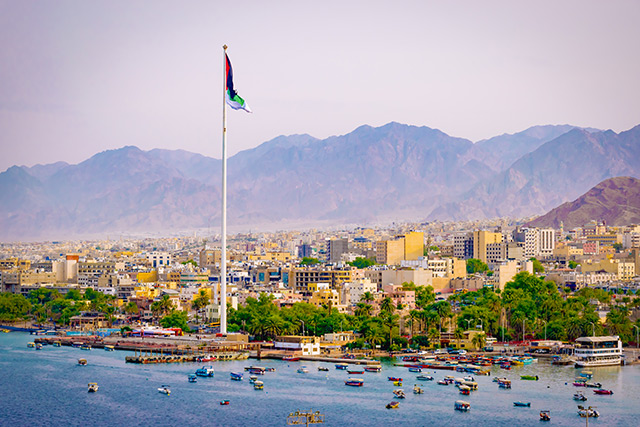The Trail is a long distance walking route from Um Qais in the north to Aqaba on the Red Sea in the south. Made up of 8 key sections and more than 600 kilometers in length it would take approximately 40 days of non-stop walking and camping to complete the trail in one go. The route passes through Jordan’s diverse landscapes and some of its most beautiful and iconic historical and cultural tourist sites. From the rolling hills up north through the dramatic Dead Sea basin, past the rose red sandstone rocks of Petra, the vast and echoing Wadi Rum and on to the blue Red Sea. Not only will you pass through dramatic landscapes and historical tourist sites, but you will meet and be wowed by the hospitality of the Jordanian people.
Section One - Umm Qais to Ajloun
4 Days and Approximately 80km
Starting the trail in the greenest and most northern part of Jordan you will walk through hills, valleys and canyons full of ancient ruins and remnents of bygone civilisations.
This northern part of Jordan and the Jordan valley is very fertile and is the bread basket of Jordan. Walking through the grasslands and oak forests you will stumble across historical and archaeological sites dating back to the time of Christ. Thermal springs, ancient olive trees and Roman cities of the Decapolis when mixed with engaging local communities mean your first few steps in Jordan will remain in your memory forever. Click here for route and map and distance / topography chart
Section Two - Ajloun to Fuheis
4 Days and Approximately 80kms
As the trail continues you will drop down past the King Talal Dam with fantastic views eastwards. As the trail rises again it passes through farmland until it reaches the village of Rmemeen.
A typical Jordanian village with a fantastic cafe located next to a local church and mosque (not such an unusual site in Jordan seeing minarets and church spires jostling for position on the crystal blue sky). Passing through the village you will head to one of Jordan’s many Christian villages of Fuheis, home to Jordan’s first micro-brewery – Carakale Brewery.
Section Three - Fuheis to Wadi Zarqa Ma'in
4 Days and Approximately 70kms
Leaving the Carakale Brewery, perhaps after a swift beer to start the day, you will past the Hellenistic palace of Iraq Al-Ameer before descending on one of the roads used by the Jordan Rally and a favorite of the late King Hussein.
You will notice how the temperature is getting hotter and the trail becomes less green and fertile. The trail follows the plateau overlooking the Dead Sea and heads towards Machaerus, Herod’s hilltop fortress, and the place where Salome danced the dance of the Seven Veils. The path then drops down through the basalt cliffs and past the year round stream in Wadi Zarqa Main. This section of the trail finishes in the deep Wadi Wala
Section Four - Three Wadis to Kerak
4 Days and Approximately 75kms
You will now pass and walk through many Wadi’s and one of the most beautiful sections of the trail. For most visitors to Jordan and depending on the time you visit, this will be the most geographically surprising part of the trail.
The canyons running from the escarpment to the Dead Sea basin include the Wadi Mujib – Jordan’s Grand Canyon. The Mujib wadi is very wide and approximately 800 meters deep, with year round water. The trail then follows a challenging ascent as it heads towards Wadi ibn Hammad (a conservation area) past the remnants of Magdalena before a steep descent to Wadi el Tawahin. The trail then rises through Wadi Ez-Zaiyatin to the Crusader castle of Kerak.
Section Five - Kerak to Dana
5 Days and Approximately 95kms
Leaving Kerak the trail passes by and through the villages and settlements of Shehabieh, named Ifranji by the Crusaders and the abandoned Khirbet Ainun.
Passing through the olive groves and orchards above Wadi Numeira the trail heads towards Wadi Hasa. The route then descends along a track passing towering limestone cliffs and zigzagging across the wadi bed. It is likely that at whatever time of year you walk the trail you will pass many Bedouin encampments. Climbing back up to the plateau, the trail follows a path until it reaches the Edomite ruins at Sela and Mi’tan. The trail then heads towards the restored village of Dana on the edge of Wadi Dana and at the beginning of the Dana Nature Reserve managed by the Royal Society for the Conservation of Nature (RSCN).
Section Six - Dana to Petra
4 Days and Approximately 80kms
This was the first section of the trail to be developed and has been recognized as one of the 15 best hikes in the world by National Geographic.
Departing Dana Village the trail drops into the Araba Valley before it climbs up again passing through a number of climatic zones, diverse ecosystems and myriad of hills and valleys. Its geological diversity is simply spectacular. The finale of this section of the trail is the Rose Red city of Petra, a city carved from the soft sandstone mountains by the Nabateans. The trail enters Petra through the back door and the first glimpse of Petra will be the Monastery, Petra’s largest facade. The trail has also be termed the Inca Trail of the Middle East, a worthy comparison.
Section Seven - Petra to Wadi Rum
7 Days and Approximately 110kms
The trail connects two of Jordan’s most iconic tourism and historical sites – Petra and Wadi Rum. This 7 day trek is one of the longest stretches of wilderness the trail passes through.
Through this barren, harsh desert terrain you will experience majestic mountains and stunning star filled night skies. Starting in the deep valleys and finishing in open sandy desert this section of the trail passes through places in Jordan that not even the Bedouin visit, although it was probably the route taken by the Arabian Camel trains as they headed to Petra and on to the Mediterranean.
Section Eight - Wadi Rum to Aqaba
4 Days and Approximately 70kms
Heading through Wadi Rum and south towards Aqaba this is the iconic route that Lawrence of Arabia took when he attacked Aqaba fort in 1917. The trail passes Jebel Khazali and Jebal Qattar down through Wadi Waraaqa to the Bedouin village of Titen.
Leaving Titen and following an old shepherd paths the trail winds its way across the wadis and granite mountains of the desert until you see your first glimpse of the Red Sea. The descent through long sandy wadis to the warm waters of the Red Sea – marks the end of the Jordan Trail.
For more information on how you can walk the Jordan Trail with Discovery Circle Tours please contact us here
